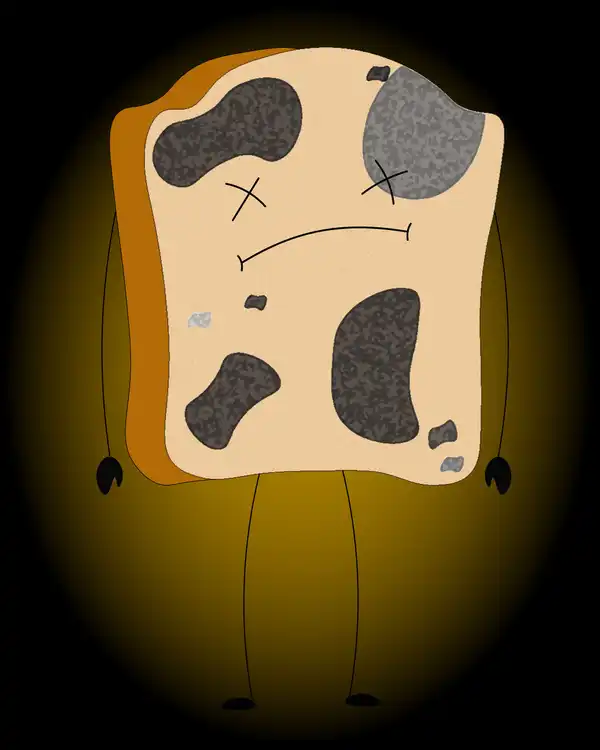
Everything you need to know about stem cells
What are stem cells, and what makes them so unique? What are the different types of stem cells, and how have they impacted modern medical science? Here is us answering all your questions about stem cells.

You wake up in the morning with the sound of your alarm blasting into your ears. You get out of bed grumpily as you have an early day at work. Since you need to leave home soon, you decide to make a quick breakfast. You reach out to your dining table and look for that loaf of bread you bought a few days ago (You forgot to leave it in the fridge as usual). But what you see does not improve your mood - the bread has something black growing on it! You decide to open the packet of bread and investigate more closely. You see that some slices of bread have little white patches here and there. Whereas, some others have a black cottony layer starting to grow on them. It even smells weird. Your intuition tells you to throw away that loaf immediately and grab breakfast in the cafe instead. But a part of you is also tempted to eat the slices that look okay, scraping away the little spoilt bits. You also wonder what that black thing on your bread really is.
So, what is that black thing growing on your bread and can you really eat it? Let’s take a look.
The black layer growing on your bread is actually a type of fungus. We all know of plants, animals and microorganisms like bacteria. But a fungus is actually quite different from all of these three. While bacterial cells are very simple, fungi have cells that are quite sophisticated. While plants have chlorophyll and can make their own food, fungi do not have chlorophyll and hence cannot make their own food. While animals can digest food inside their bodies, fungi digest food outside their bodies.
So why does a fungus look all fluffy and thread-like? This is because most fungi are made up of an interconnected network of filaments. These filaments are called hyphae. The hyphae together make up the body of the fungus, called the mycelium. The hyphae are made of cells and these cells release enzymes that digest the material they are growing on. The digested material is then absorbed by the cells. Most fungi are therefore called saprophytes, meaning they grow on and decompose dead and decaying material.
To reproduce, fungi make tiny rounded structures called spores. These spores can be carried by air and germinate if they land on a nutrient-rich substrate.

Rhizopus stolonifer grows on a slice of bread with its hyphae and spores. © Sunaina Rao
One of the fungi that we commonly find growing on bread is a species called Rhizopus stolonifer (There are many other species too, but we will look into this specific one in this article). The spores of this fungus are found drifting in the air or sitting in the soil. They are found pretty much in all parts of the world, from warm countries near the equator to the cooler countries up north.
So, yes, the air in your house too most likely has plenty of spores drifting through it. Some are already sitting on your delicious, sugar-rich bread slices, patiently waiting to germinate. When the temperature is optimum (usually about 25 °C) and humidity is relatively high, the spores become active (Alfaro-Sifuentes et al., 2019). They start making thread-like hyphae that start to spread across the bread. This is the point when the fungus looks whitish in colour. Some hyphae become root-like, burying into the bread to get a firm hold. Whereas, some of the other hyphae protrude outwards into the air. As the growth progresses, these protruding hyphae start making rounded structures at their ends. These contain all the fungal spores. The production of spores now starts to make the fungus look black or grey in colour (Baggio et al., 2015).
So, the disgusting thing growing on your bread is actually a bunch of fungal hyphae and the spores made by them.
In short, eating bread with fungus growing on it can be risky. Fungi are known to cause allergic reactions in people sensitive to fungi (Sircar and Bhattacharya, 2012). Additionally, these fungi are known to cause a disease called zygomycosis in people with weak immune systems (Chayakulkeeree et al., 2006). This could include people taking treatment for cancer or patients who have undergone transplant surgeries. Symptoms of zygomycosis can include headaches, nausea and chest pain.
So, it might actually be better to throw that loaf of bread into a waste bin and eat a warm breakfast in that cafe instead. But watch out! You may wake up the next morning to find that the fungi are making a comfortable home for themselves in your waste bin!